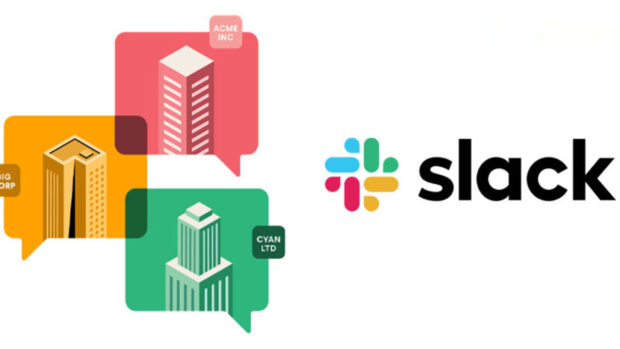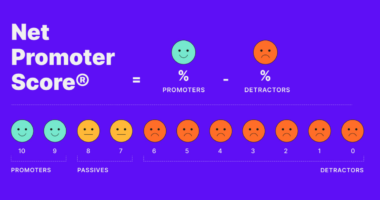Collaboration software brings a lot of benefits to businesses. It allows you to communicate more effectively with your team, customers, and users. It also helps you stay organized, boost productivity, and save time. But to keep your business running smoothly and keep your users satisfied, you need to ensure you’re using the best collaboration software available.
Collaboration software is a critical tool for digital marketers, but is there a specific tool that every professional should have in their arsenal? The answer is: There’s no one best tool. But there are a few standout products that every marketer can’t live without. These range from the business-building software, like HubSpot, to the social media creation software, like Sprout Social. When it comes to choosing a collaboration software, there are countless choices out there. But here is our list of the best collaboration software, which includes the best options for teams, marketers, content creators, and more.
Disclosure: This content is reader-supported, which means we may receive a commission if you click on some of our links.
In an era of multi-site teams, collaboration software has become an indispensable tool for businesses.
These tools keep everyone on the same page, whether it’s a simple audit or managing large projects.
Your company can even use these solutions to improve contact with customers, contractors and stakeholders outside your organization.
But to enjoy these benefits, you first need to find the right collaboration software for your business. People work well together in different ways – which of these good decisions will significantly benefit your team?
Use the buying guide and recommendations I’ve provided in this article to help you decide.
#1 – Review of Zoho Projects – the best collaboration software with many features
Zoho Projects is one of the most popular and user-friendly collaboration tools on the market today. This software makes it easier for teams to collaborate, plan and track work.
As a cloud-based solution, you can use Zoho Projects to collaborate and manage tasks from any location.
Easily track dependencies on a simple platform. No matter how much information you enter, everything is clearly presented in a user-friendly interface.
Compared to other tools, Zoho Projects has a wide range of features. There are never crowds or overcrowding. Here’s a short list of my favorites:
- Task management with Kanban boards
- establish dependencies between tasks based on the order in which they are performed.
- Mapping the entire workflow
- Gantt charts
- Task Reports
- Time management tools
- Follow-up of problems
- SLA management
- Automation
Zoho Projects even offers industry-specific solutions for categories like software development, real estate, construction, marketing, education, etc.
It is free for three users. You’re limited to two projects, but you have Gannt chart tools and a mobile app. Premium plans start at just $5 per user per month for up to 50 users. You can try Premium for free with a 10-day trial period.
#2 – Review of Wrike – the best all-in-one project management tool
Wrike is a powerful and versatile project management solution. This software makes it easy to give your team full control and visibility over projects and tasks.
If you are looking for collaboration software that is mainly focused on project management, then this product is the best choice for you.
More than 20,000 companies worldwide rely on Wrike, including big names like Dell, Google, Airbnb and Siemens. Let’s take a look at some of the features and benefits:
- Agile project management
- Dashboards and user workflows
- Process Automation
- Real-time comments and changes
- Notifications
- Real-time editing and dynamic reporting
- Easy exchange of information with stakeholders
- End-to-end visibility and real-time updates
- Safety at the company level
- Sharing files and attachments
Wrike is a popular choice for marketing teams, creative professionals and product development teams. However, it is versatile enough to meet the needs of almost any type of business.
The software is free for five users. However, to take full advantage of the project planning and collaboration features, you must upgrade to a paid plan. They start at $9.80 per user per month. Try it free for 14 days.
#3 – Slack review – the best forteam messaging

Slack is a name that many of you may already be familiar with. In recent years it has rapidly become the most important platform for internal business information.
Whether you work remotely or in a traditional office environment, Slack is a great option to consider.
More than 750,000 businesses use Slack to collaborate. Here is a brief overview of some of his characteristics and strengths:
- Stay organized by using Slack channels for projects, teams or topics.
- File sharing features
- Audio and video calls with screen sharing
- Over 2,200 Slack applications to integrate (Zoom, Jira, Salesforce, Google Drive, etc.)
- Create your own workflows to save time
- Use the Slack API to integrate your internal tools
- Enterprise-level scalability and security
- Collaborate with partners such as customers, contractors, suppliers, etc. by adding them to channels.
Rates start at just $6.67 per user per month. All plans include unlimited messaging. No matter the size of your team or industry, Slack is the best collaboration tool for team messaging.
#4 – Trello overview – the best for easy task management
Trello is a simple task management solution. With work and projects underway, this is one of the best ways for the whole team to collaborate and stay organized.
With Trello charts, maps and lists, businesses in any industry can use this platform to increase their productivity.
Here’s a brief explanation of what you can achieve with Trello collaboration software:
- Adding comments, attachments and expiry dates to cards
- Create tables to separate projects and teams
- Integrated workflow automation (rule-based triggers, deadlines, etc.)
- Add lists to create a separate workflow for each project
- Integration with third-party applications you already use
- Collaborate anywhere with the Trello mobile app (iOS and Android)
- Notifications and team tags
- Easily assign tasks or maps to one or more users.
Trello is powered by Atlassian, the world’s largest software and project management company. So you know you can trust that decision. That’s why over a million teams around the world rely on Trello.
This collaboration software is free for 10 boards with unlimited cards and lists. Paid plans start at $10 per user per month. Start with a free demonstration.
#5 – Flock Test – the best for remote working
Flock is another collaboration program that focuses on messaging. But it’s a bit more advanced than Slack in terms of features and functionality.
This software is ideal for teams working together remotely.
Flock lets you keep all your messages, applications and productivity tools in one place. Here are some of the features you should pay special attention to:
- Real-time reporting
- Customizable channels and order catalog
- Video conferencing
- Screen sharing
- File exchange
- Powerful search (for articles, links, documents, etc.)
- Productivity tools for sharing notes, task lists, reminders, surveys, etc.
- Over 50 seamless application integrations (Google Drive, Asana, Twitter, etc.)
For small teams, Flock is available for free with 10 channels. You also get unlimited one-on-one and group messages. Paid plans start at just $4.50 per user per month, which is great.
Try Flock for free with a 30-day trial.
#6 – BlueJeans Test – the best for audio and video conferencing
If you need collaboration software for conference calls, you should check out BlueJeans. It is a simple and secure way to support teleworkers via audio and video conferencing.
Brands like Zillow, Facebook, ADP, Intuit and National Geographic trust BlueJeans to work with them.
Let’s take a closer look at what makes BlueJeans so enjoyable to use:
- Collaborate via video, audio and web conferencing from any device.
- Real-time meeting management and automatic alerts
- Meeting highlights and transcripts
- Safety at the company level
- Changeability at the touch of a button
- Excellent call quality with HD video and Dolby Voice
- Dynamic content sharing
- Software integration network (Microsoft Teams, Slack, etc.)
- 24/7/365 support
- Unlimited 1:1 meetings
- Unlimited number of group meetings
Rates start at just $9.99 per host per month. If you are still unsure, you can get free unlimited access to BlueJeans and all its features with a 7-day trial.
What I looked for to find the best collaboration software

As mentioned earlier, there are many different collaboration tools on the market today. With dozens, if not hundreds, of options to choose from, choosing the best option for your business can seem like a daunting task.
To simplify the buying process, I’ve listed the most important factors to consider when evaluating different options. I will discuss each of these points in more detail below.
Software type
Collaboration software comes in many shapes and sizes.
You’ll find solutions designed for project management, while others are specific to instant messaging or video conferencing. There are even all-in-one solutions on the market today.
Which option is best for you depends on your business needs. Perhaps some of you only need an internal messaging system and not a document storage or task management platform.
Extent of holding
What is the size of your company?
In addition to the number of people on your team, you should also consider the number of teams, departments, and other segments.
For example, you may want a tool that anyone in your company can use to communicate with another employee.
But files shared by accounting or HR may not be accessible to your marketing team. Your sales staff should not have access to confidential financial information.
So make sure the software you are considering allows you to create different groups for each department or project. You will also want to find features to control permissions and access for each individual user.
Controllability
Collaboration software should make your life easier, not harder.
Some instruments are probably more complex than others. Depending on your needs and the technical skill level of your end users, this is fine. Whenever you use a new software, there is always a learning curve. So you have to keep that in mind.
But after the first few weeks or months of using the software, your entire team should be pretty adept at it. Otherwise, it can complicate your processes instead of increasing productivity.
I highly recommend taking advantage of the demos and free trial versions. This will give you a better understanding of which options are easiest to use.
Organisational aids
This follows from our last point. The best collaboration software makes it easy for you to stay organized.
Depending on the software, there are task cards, folders, groups, or other ways to organize things.
How can you move from one project to another? Can users easily find a file or document shared by a colleague? Can supervisors and project managers at a higher level keep an overview?
Throughout the organization, the way everything is organized in the collaboration software is reinforced.
If you have a small team of five users working on a project, this may not be a big deal. But when that number runs into the hundreds or thousands, it becomes essential to stay organized.
Integration
Collaboration software should easily integrate with other tools and programs used by your organization.
From CMS to CRM, email software, cloud storage services and more, check out these integrations before making your final decision.
It’s easier to use collaboration software when everything can be managed and accessed from a single platform. Otherwise, users have to switch from one tool to another, which is not ideal from an efficiency point of view.
Summary
Collaboration software keeps your entire organization organized and communicating with each other in real time.
To find the best software for your business, start by studying the buying guide I highlighted at the beginning of this article.
Then review the options recommended above to choose the tool that best meets your needs. Here is the full list of my recommendations:
- Zoho Projects – the best collaboration software with lots of possibilities
- Wrike – the best universal project management tool
- Slack is the best option for team messaging
- Trello – the best tool for easy task management
- Flock is best for remote working
- BlueJeans – The best for audio and video conferencing
My final tip is to use the free trial or freemium versions. Put the product into practice. There is simply no better way for you and your team to understand how a particular tool works.
- SEO – Unlocks a large amount of SEO traffic. To see real results.
- Content marketing – our team creates epic content that gets shared, attracting links and traffic.
- Paid media – effective paid strategies with a clear return on investment.
Frequently Asked Questions
What is the best collaboration tools in 2023?
The best collaboration tools in 2023 are: Slack Google Docs Skype Slack is a collaboration tool that allows you to share messages, files, and other content with your team. It also has integrations with other tools like Trello and GitHub. Google Docs is a collaboration tool that allows you to create, edit, and share documents online. Skype is a collaboration tool that allows you to make free voice calls over the internet.
What are the best tools for collaboration?
The best tools for collaboration are those that allow you to share your work with others. Some of the most popular tools include Google Docs, Microsoft Office 365, and Dropbox.
What is the most used online collaboration tool?
Slack

